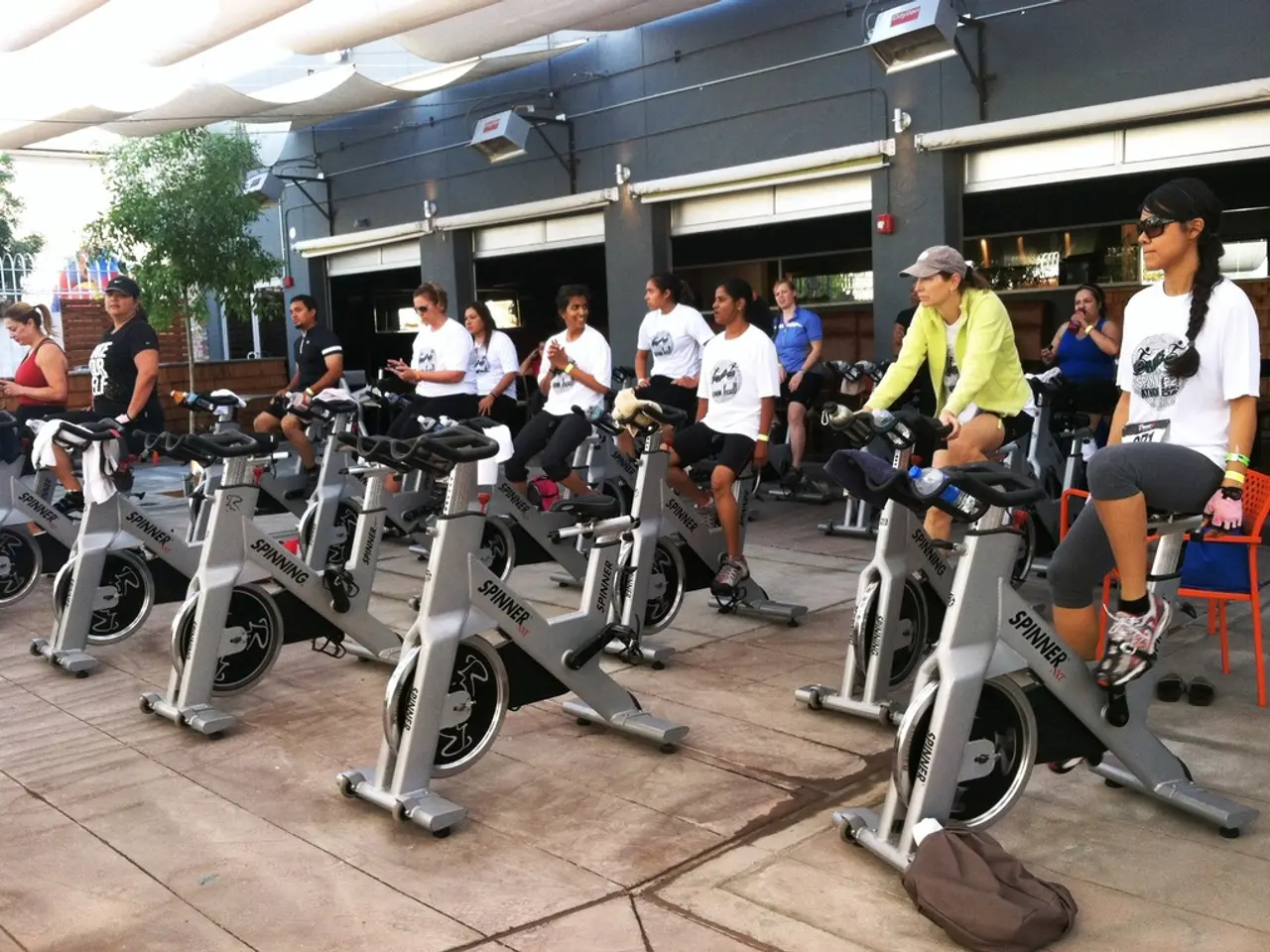Reducing Weight Effortlessly After 40 Through Easy Adjustments
As we age, our metabolism naturally slows down due to hormonal changes and loss of muscle tissue. However, there are effective ways to boost metabolism through lifestyle changes and nutrition.
Strength Training and Resistance Exercises
Strength training and resistance exercises are the most effective methods to increase metabolism after 40. By preserving and growing muscle mass, these exercises help sustain a higher metabolic rate. Muscle tissue burns more calories at rest, making it a valuable tool in maintaining a higher metabolic rate.
Protein Intake
Increasing protein intake is crucial for maintaining muscle and boosting calorie burning. Aim for around 0.7-1.0 grams of protein per pound of ideal body weight or 20-30 grams per meal. Protein helps curb late-night snacking, supports fat loss, and boosts calorie burning during digestion (thermogenesis).
Healthy Fats
Healthy fats, especially medium-chain triglycerides (MCTs) found in coconut oil, nuts, seeds, avocados, and fatty wild fish, provide clean energy sources to optimize mitochondrial and metabolic function.
Vegetables
Eating plenty of colorful green and cruciferous vegetables, rich in antioxidants, supports cellular energy production and reduces oxidative stress, aiding metabolism.
Refined Sugars and Flours
Eliminate or limit refined sugars and flours since they disrupt insulin sensitivity, which is crucial for metabolic health and fat management.
Hydration, Sleep, and Non-Exercise Activity
Maintaining adequate hydration, sleep, and non-exercise activity (NEAT) such as walking during calls or standing while working can support fat metabolism and metabolic rate.
Nutrient-Dense Foods
Including foods like lean meats, Greek yogurt, sweet potatoes, green tea, and berries adds nutrient density that supports muscle retention and fat loss as you age.
Lifestyle Habits
In addition to diet and exercise, incorporating healthy lifestyle habits like hydration and sleep can further support fat metabolism and metabolic rate.
Community Support and Goal Setting
Building a support network and setting specific fitness goals can improve motivation and adherence to exercise programs. Individuals with support networks are 42% more likely to achieve their fitness goals, and setting specific, time-based, and realistic fitness goals can increase motivation and help gain momentum in weight loss efforts.
Stress Management
Managing stress effectively is crucial for weight control, particularly in midlife. Strategies for stress relief include adopting healthy coping mechanisms like yoga or regular exercise, drinking more water, getting good rest, and seeking community support.
In summary, effective metabolic boosting after 40 involves combining strength training, high-quality nutrition focused on protein and metabolism-supportive fats and vegetables, along with healthy lifestyle habits like hydration and sleep. By making these changes, you can effectively boost your metabolism and maintain a healthy weight as you age.
References:
- Harvard Health Publishing
- Mayo Clinic
- WebMD
- NCBI
- Healthline
Strength training and resistance exercises, which preserve and grow muscle mass, are the most effective methods to increase metabolism after 40. For maintaining muscle and boosting calorie burning, aim for around 0.7-1.0 grams of protein per pound of ideal body weight or 20-30 grams per meal. Healthy fats, particularly medium-chain triglycerides, provide energy that optimizes mitochondrial and metabolic function.
Eating plenty of green and cruciferous vegetables, rich in antioxidants, supports cellular energy production and reduces oxidative stress, aiding metabolism. Conversely, refined sugars and flours should be eliminated or limited since they disrupt insulin sensitivity, crucial for metabolic health and fat management.
Maintaining adequate hydration, sleep, and non-exercise activity (NEAT) can support fat metabolism and metabolic rate. Nutrient-dense foods like lean meats, Greek yogurt, sweet potatoes, green tea, and berries add nutrient density that supports muscle retention and fat loss as you age.
Besides diet and exercise, improving motivation and adherence to exercise programs can benefit from building a support network and setting specific fitness goals. Stress management, particularly in midlife, is essential for weight control, with strategies like yoga, regular exercise, drinking more water, getting good rest, and seeking community support being crucial.
In summary, boosting metabolism after 40 involves combining strength training, high-quality nutrition focusing on protein, metabolism-supportive fats, and vegetables, along with healthy lifestyle habits like hydration, sleep, and non-exercise activity. By making these changes, you can effectively boost your metabolism and maintain a healthy weight as you age, supported by numerous health resources like Harvard Health Publishing, Mayo Clinic, WebMD, NCBI, and Healthline.




